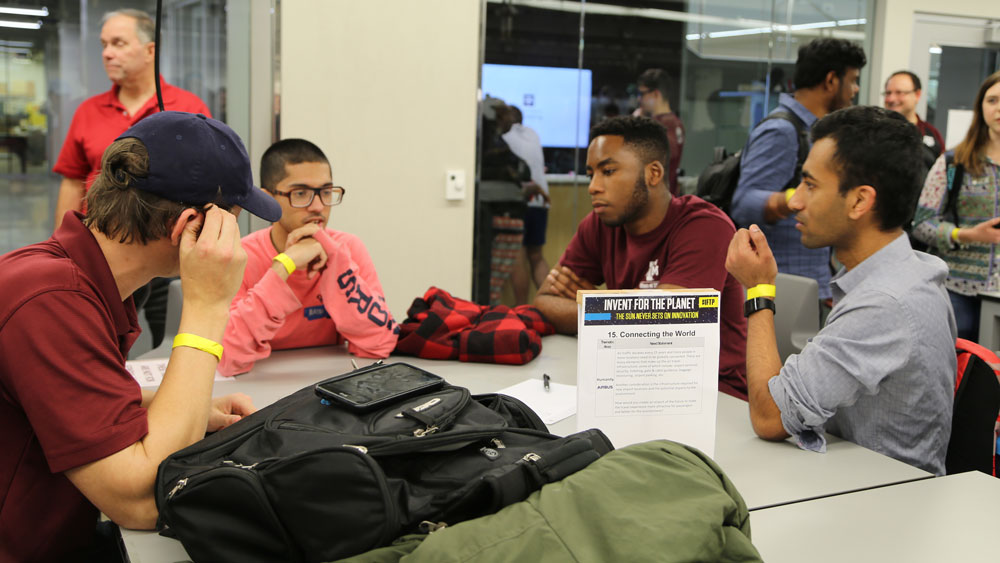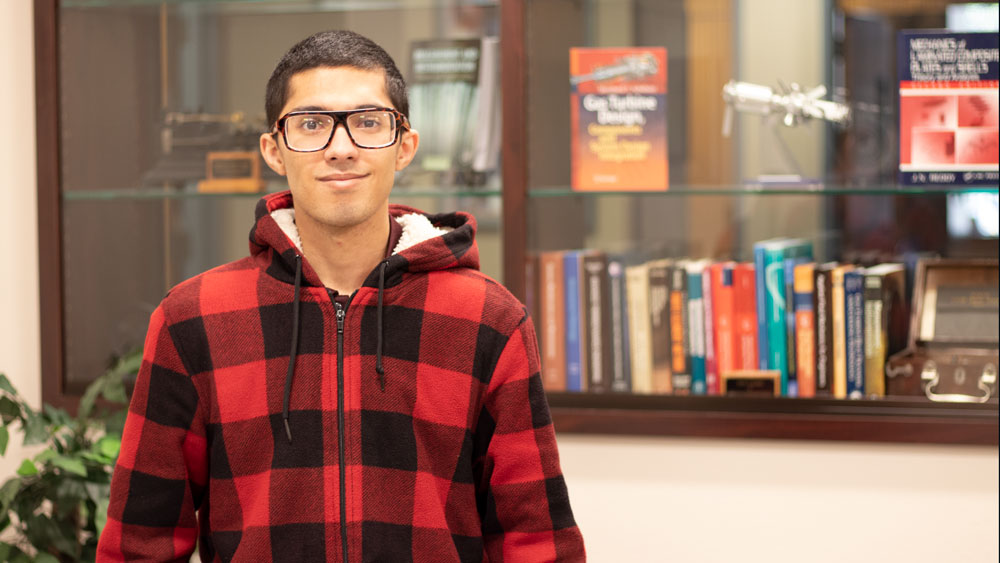
When it comes to aerospace innovation, winging it takes on a whole new meaning as several teams competing in this year’s Invent for the Planet discovered.
An intensive 48-hour design competition hosted by the College of Engineering at Texas A&M University, Invent for the Planet 2019 brought together a global community of engineering students to propose solutions to real-world challenges faced by society and industry today.
Through the use of Microsoft Teams, student groups from 25 universities around the world were able to video chat with mentors, moderators and other student teams to collaborate, share information and help guide one another toward success.

Awarded first-place at Texas A&M for their solution to minimize hail damage to delicate aircraft wing control surfaces, operational delays, costly repairs and accidents, Team Hail No included mechanical engineering students Mazen Ali and Bamidele Fadayomi.
The team’s dual air bag module design, similar to an inflatable sleeve, would be deployed over the leading and trailing edges of an aircraft’s wings and connected with nylon cables to secure the straps in the sleeves with cam buckles by a team of three airline employees. Once the sleeves are in place, it would be inflated by an air canister to help protect the wings from the storm.
As Ali and Fadayomi described, having a background in mechanical engineering gave them an edge in the competition and helped to bolster their team. Along with giving them a unique perspective on how to optimize mechanisms and storage and consider the cost of various elements in the design, their mechanical engineering experience also aided them in the creation of a 3D model of their proposed solution. This model, in turn, allowed the team to see the plausibility, scalability and practicality of their proposal.
Along with being able to apply what they learned in their classes to a real-world challenge, Invent for the Planet gave both students a chance to take a step beyond the classroom experience and develop new skills.
“It opened my eyes to the importance of marketing your ideas and working together as a whole,” said Fadayomi. “I had always thought that you just needed to be smart, but it’s really important to be able to communicate your ideas and actually market them as well.”

“I feel like Invent for the Planet has really shaped my mindset about how other disciplines think and how I should think, not only as a mechanical engineer, but as an entrepreneur,” Ali said.
Team Hail No also included students Umang Kantesaria, computer science and engineering; Jacob Azbell, electrical engineering; Jobin George Mathew, industrial engineering; and William Smith, manufacturing and mechanical engineering technology.
Now with the event behind them, the team is taking their design to new heights by working with Airbus, a European corporation and international pioneer in aerospace engineering, to develop it further for production and industry use. The team is also planning to attend the engineering project showcase this semester to display their product with other industry representatives.
“The fact that a company is actually looking at our product and thinks it’s feasible and wants to take it a step further is a really huge accomplishment,” said Ali. “It isn’t just a project in a classroom. This is a real product that has actually impressed someone who has been wanting to do this. And that’s a lot to accomplish in just those 48 hours.”